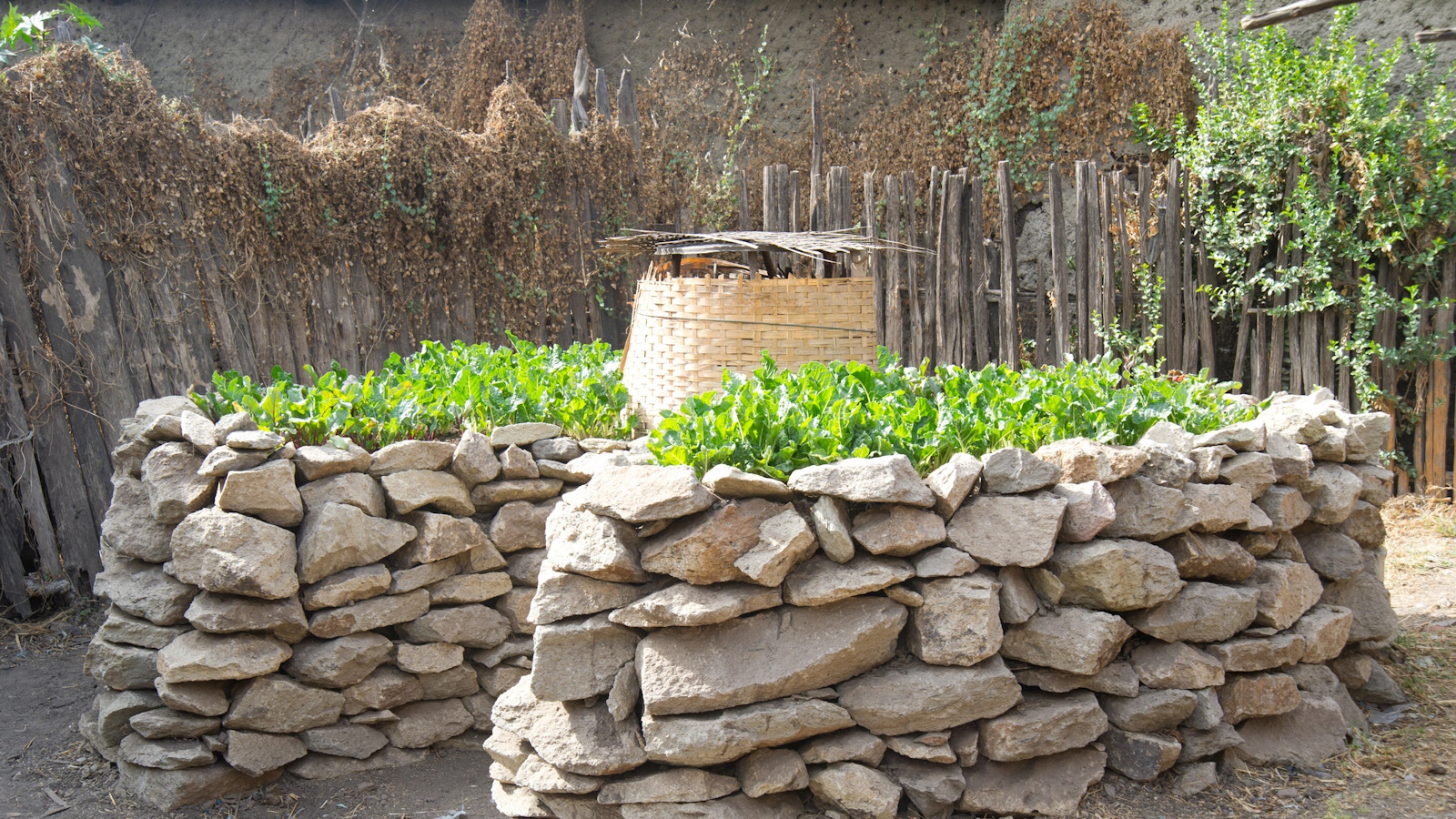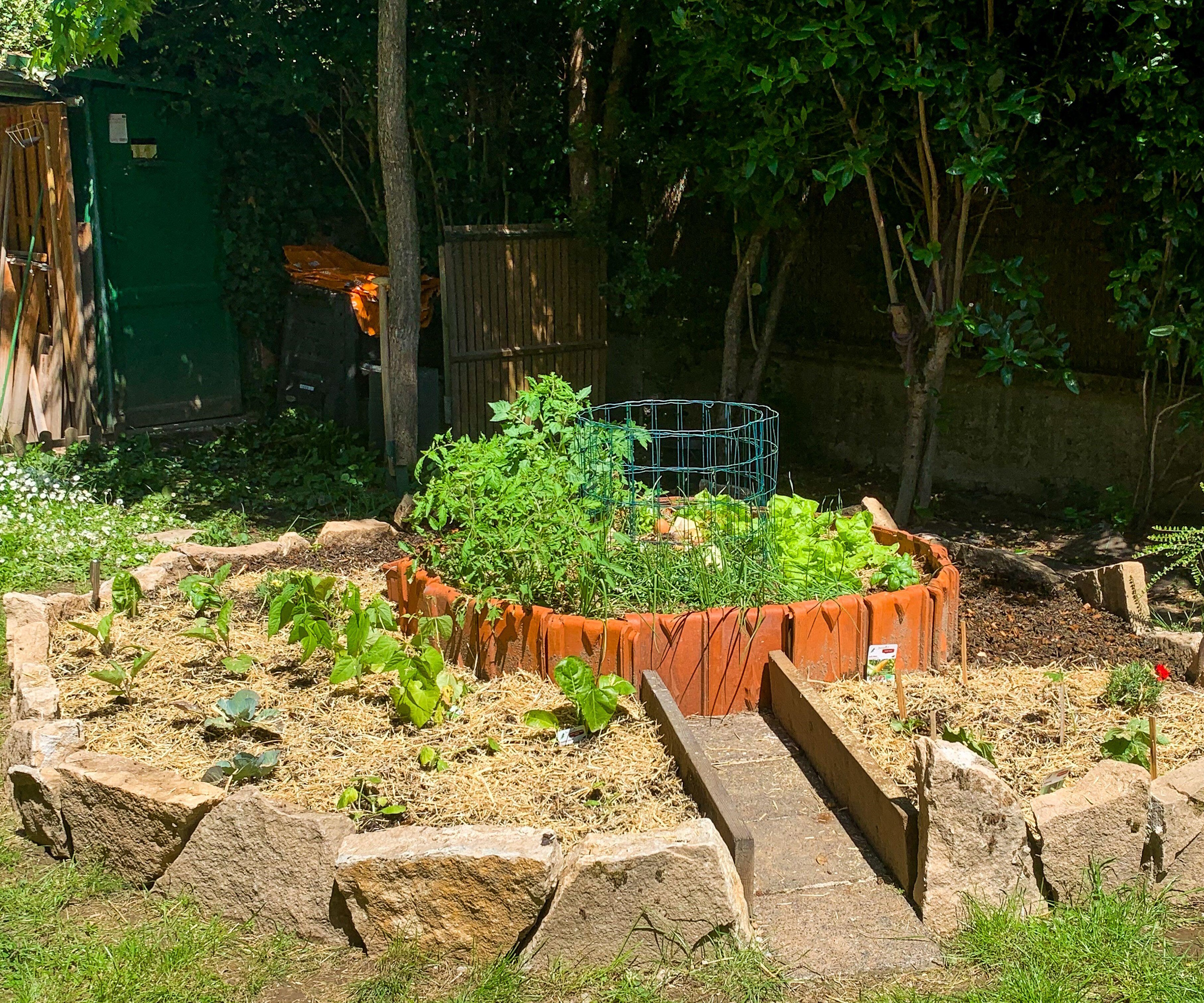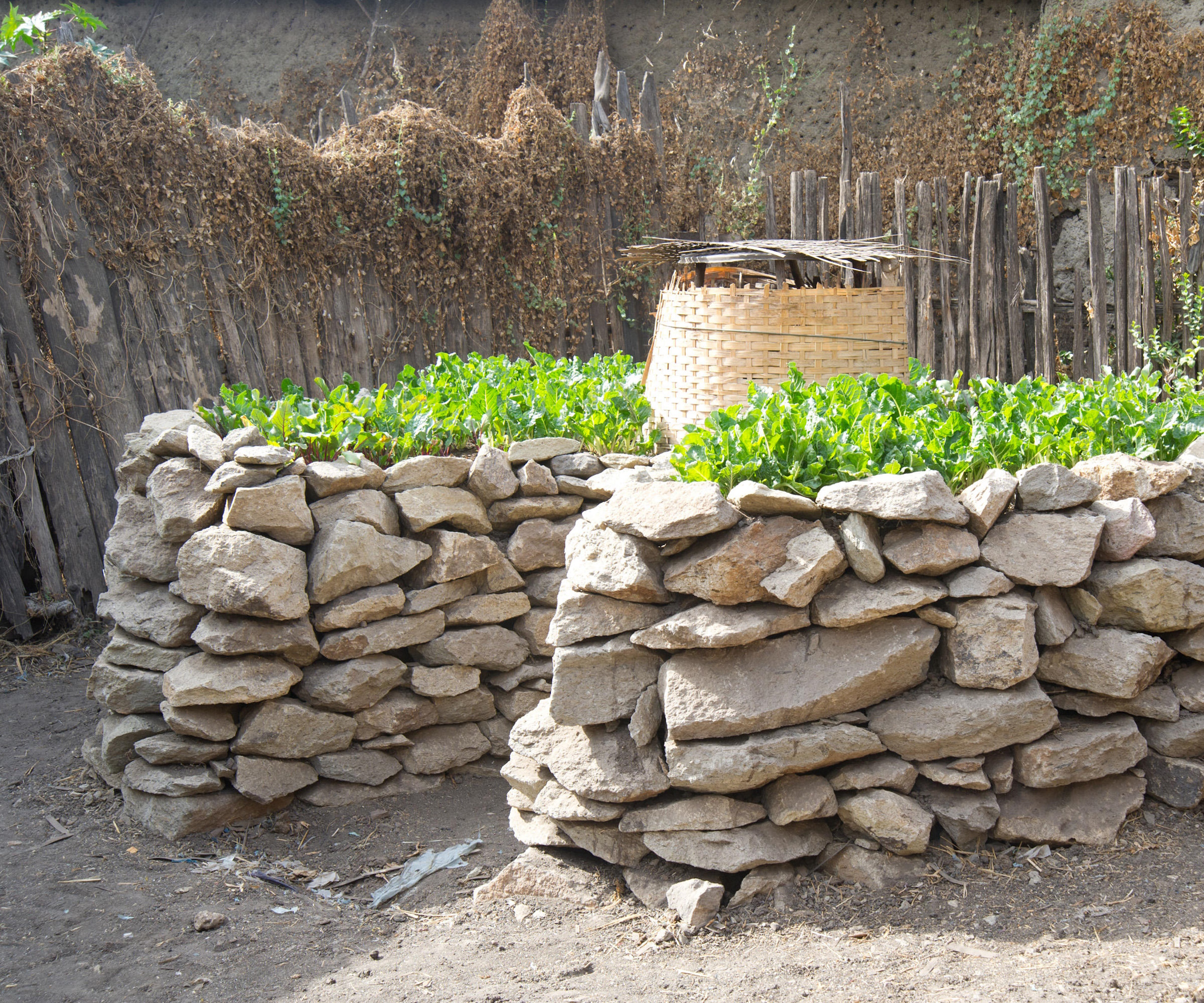What is keyhole gardening? And how to add this sustainable growing system to your backyard
This method of raised bed gardening is an ideal solution if you live in a challenging climate


Keyhole gardening refers to a form of permaculture - specifically the use of distinctive, circular raised beds that have a central section cut out of them, giving the appearance of a keyhole.
At the centre of the cut out is a composting basket, which is integral to the design. The basket is filled with yard and kitchen waste, which decomposes and diffuses nutrients into the rest of the raised bed when watered. This, in turn, creates a microclimate, where organisms such as earthworms enhance the soil quality. The keyhole shape allows easy access to the growing surface and the central composting basket.
It is a growing system that landscape designer Giulio Giorgi has chosen to include as a central feature for his first-ever garden at the UK’s RHS Chelsea Flower Show - the ‘World Child Cancer UK Nurturing Garden’.
He was inspired by this gardening method, not only owing to its sustainability credentials, but also because the shape and function of the keyhole-style meant he could vary the height of the raised beds making them accessible to all. We delve deeper into why this clever system is worth exploring.

A keyhole garden with a central composting area
Expert tips on how to create keyhole garden
Anyone can make a keyhole garden - it does require some kit, but is perfectly possible to create as a DIY project.

Giulio Giorgi is an Italian landscape designer, horticulturalist, writer and gardener. Giulio trained first in agronomy and ecology in Italy, France and Norway, and worked for several years in organic agricultural research. He has designed the World Child Cancer Nurturing Garden, sponsored by Project Giving Back, at the RHS Chelsea Flower Show in London.
The main elements of keyhole gardening

Sketch of Giulio Giorgi's raised keyhole beds for his World Child Cancer UK's nurturing garden at RHS Chelsea
The essential elements of keyhole gardening are the shape of the raised bed, the central compost cage, and the way you water the bed, which allows nutrients to flow naturally into the soil.
By watering the keyhole garden at its center, the moisture drains through the compost and into the rest of the bed, providing a constant source of nutrients.
Design expertise in your inbox – from inspiring decorating ideas and beautiful celebrity homes to practical gardening advice and shopping round-ups.
The climates best suited to keyhole gardening

Keyhole gardens originate from sub-Saharan Africa, where crop cultivation can be challenging.
‘They use the raised bed design to successfully grow vegetables on difficult soils and in challenging climates, especially through drought periods, as the bed structures retain moisture, drainage and nutrients above the ground,’ explains Giulio.
They would be particularly useful in climates which suffer from drought, and in areas of very poor soil. However, provided you have the space, a keyhole garden can be set up anywhere.
How to create a keyhole garden

‘The general guideline for a keyhole garden is that you need a flat area of at least 6 feet in diameter, allowing nutrients from the compost pile to reach all the roots and successfully grow vegetables, herbs, edibles or plants,’ says Giulio.
Giulio has personally designed the raised bed keyhole-style structures that will form part of his Chelsea Flower Show garden. 'They are designed to fit together like a modular block system requiring no concrete or chemical glues in their assembly,' he says. 'This innovation will show gardeners how they can build a similar structure using materials such as terracotta bricks.
'The clay bricks that I have designed are perforated blocks. They interlock to form a stable raised bed brick structure in various sizes. They have also been designed specifically for ephemeral gardens, as they can be disassembled and reused with no waste, allowing an infinite variety of shapes and patterns. For added stability, these blocks can be anchored together using wooden stakes through the bespoke perforations in the bricks,' adds Giulio.
What you need to create your own keyhole raised beds:
- Stones, bricks, logs or wood panels
- Chicken wire, such as this galvanized mesh chicken wire from Amazon
- Hammer or mallet
Method:
- Choose a space large enough to create a bed about 6ft in diameter. Keyhole raised beds are usually 2-3 feet high. It's a good idea to select an area that is fairly flat.
- Using a wooden stake with string attached, stand in the centre of where you want your raised bed to be, and plot out a circular shape - as you would using a compass - to map out the perimeter.
- Decide where you want your access path to be located, and allow between 20 and 26 inches of space from the outer edge to the center.
- Add the chicken wire compost cage into the center of the bed. This might require some support using strong garden wire or stakes to hold it in place. It's a good idea to put some stones or rocks at the base to allow for aeration.
- Now you are ready to build the outer walls of the raised bed, using whatever material you choose. Just make sure it is strong enough to hold the soil once it is placed in the bed.
- Once your perimeter is secure, you are ready to fill your keyhole bed with good-quality soil. Even better if you can mix it with some home-made compost or mulch, and grit for drainage. If you can, try to have the soil level fractionally higher at the compost cage level than at the outer edge of the bed, to encourage water to drain adequately.
- Now you are all set to plant. You can fill your compost cage with garden waste and kitchen scraps, and plant up your beds with whatever edibles or ornamental plants you wish.
Giulio says he hopes his garden design and plant choices will provoke some interesting discussions and thoughts.
‘It is an example of how sustainable garden practices can be introduced into gardens across the world as our climate changes, and we begin to place increased value on our world’s resources to allow us to successfully grow crops and plants,’ he says.
FAQs
Are keyhole gardens good for beginners?
Yes - keyhole gardens make for a great start if you want to try growing your own vegetables for the first time. They are also good for gardeners of all ages owing to their accessible shape. They are easy and low-cost to build, too.
What are the down sides to keyhole gardening?
The garden beds might not look particularly neat, as they are designed to be made with whatever materials you have to hand. The composting basket is integral to the way these beds work, so if you have adequate space you might want to consider placing them towards the back of your yard rather than close to the house.
As a variation on raised bed gardening, keyhole gardens provide huge benefits to gardeners of all ages and abilities. You can find out more about growing in raised beds and permaculture gardening in our guide to no dig gardening.

Rachel is a gardening editor, floral designer, flower grower and gardener. Her journalism career began on Country Living magazine, sparking a love of container gardening and wild planting. After several years as editor of floral art magazine The Flower Arranger, Rachel became a floral designer and stylist, before joining Homes & Gardens in 2023. She writes and presents the brand's weekly gardening and floristry social series Petals & Roots. An expert in cut flowers, she is particularly interested in sustainable gardening methods and growing flowers and herbs for wellbeing. Last summer, she was invited to Singapore to learn about the nation state's ambitious plan to create a city in nature, discovering a world of tropical planting and visionary urban horticulture.